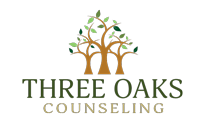Attention Deficit Hyperactivity Disorder (ADHD) can be diagnosed in children and adults at different stages throughout life. Individuals with ADHD show inattention and/or hyperactivity patterns that interfere with functioning or development.
Confusing Labels for ADHD In 1994
The name of the disorder was changed in a way that is confusing for many people. Since 1994, all forms of attention deficit disorder have been officially called “Attention-Deficit/ Hyperactivity Disorder,” regardless of whether the individual has symptoms of hyperactivity or not. Even though these are the official labels, many professionals and laypeople still use both terms: ADD and ADHD. Some use those terms to designate the old subtypes; others use ADD just as a shorter way to refer to any presentation. www.help4adhd.org
Common Signs and Symptoms of ADHD
The most common symptoms of ADHD are inattention and hyperactivity. A diagnosis of ADHD must be present for at least six months to the extent that it is disruptive and inappropriate for the individual’s developmental needs. The following characteristics may be present for individuals that present with this diagnosis:
- Difficulty focusing on details, careless mistakes, appearing not to listen
- Relationship difficulties
- Lack of organizational skills and follow-through
- Excessive procrastination, avoidance of tasks that require mental effort
- Fidgeting, running or climbing in situations where it is not appropriate, unable to participate in quiet activities
- Poor social skills and communication skills such as interrupting or rapid talking
- Lack of patience
ADHD is Typically Represented by Three Types of Presentations
Combined Presentation: Enough symptoms of both inattention and hyperactivity-impulsivity were present for the past 6 months
Predominantly Inattentive Presentation: Enough symptoms of inattention, but not hyperactivity-impulsivity, were present for the past six months
Predominantly Hyperactive-Impulsive Presentation: Enough symptoms of hyperactivity-impulsivity, but not inattention, were present for the past six months.
Because symptoms can change over time, the presentation may also change over time.
ADHD & ADD Diagnosis
A comprehensive evaluation is recommended to diagnose ADHD adequately. This is necessary to rule out other causes while determining the presence or absence of other conditions. Evaluations require time, effort, and patience as they can be emotional. Also, the evaluator gathers information regarding the individual’s academic, social, emotional, and developmental functions, which typically is a psychologist, clinical social worker, or nurse practitioner.
A thorough history should be taken from the parents and teachers, and when appropriate, from the child. Clinicians often use checklists for rating ADHD symptoms and ruling out other disabilities. These instruments factor in age-appropriate behaviors and show when symptoms are extreme for the child’s developmental level. ADHD cannot be diagnosed accurately from a brief office observation. The person may not always exhibit the symptoms of ADHD in the office, and the diagnostician needs to take a thorough history of the individual’s life.
Diagnosing ADHD in an adult requires an evaluation of the history of childhood. “ADHD often lasts into adulthood. To diagnose ADHD in adults and adolescents age 17 years or older, only 5 symptoms are needed instead of the 6 needed for younger children. Symptoms might look different at older ages. For example, in adults, hyperactivity may appear as extreme restlessness or wearing others out with their activity.” (APA, 2013).
Treatment for Children
Parent participation and support from the school are necessary to get an accurate picture of what concerns occur at home or in the classroom. Information is often gathered from parents, teachers, behavior specialists, and other individuals that work directly with the child. While treatment options for children may vary greatly, some options to explore include parent education, child education, parent training in behavior management techniques, medication, support services at school, and therapy for the child and family. Treatment should be individualized and tailored to the needs of the child and their support system.
“Research from the landmark NIMH Multimodal Treatment Study of ADHD showed significant improvement in behavior at home and school in children with ADHD who received carefully monitored medication in combination with behavioral treatment. These children also showed better relationships with their classmates and family than did children receiving this combination of treatment (Hinshaw, et al., 2015.) Further research confirms that combining behavioral and stimulant treatments are more effective than either treatment alone” (Smith & Shapiro, 2015.)
Treatment of ADHD for Adults
“Adults with ADHD can benefit by identifying the areas of their life that are most impaired by their ADHD and then seeking treatment to address them. Adults with ADHD may benefit from treatment strategies similar to those used to treat ADHD in children, particularly medication and learning to structure their environment. Medications effective for childhood ADHD continue to be helpful for adults who have ADHD. Various behavioral management techniques can be useful. Some adults have found that working with a coach, either formally or informally, to be a helpful addition to their ADHD treatment plans. In addition, mental health counseling can offer much-needed support to adults dealing with ADHD in themselves or someone they care about. Since ADHD affects the entire family, receiving services from ADHD-trained therapists skilled in Cognitive-Behavioral Therapy can help the adult with ADHD learn new techniques to manage living with ADHD.” www.help4adhd.org
At Three Oaks Counseling & Psychiatry, we have experienced therapists on-site and remotely that can help guide you through this process because there are times where ADHD can simply be overwhelming. Through the practice of authentic exchanges, applied cognitive behavior interventions, and support from a skilled professional, we can help you regain a sense of control.
References
American Psychiatric Association: Diagnostic and Statistical Manual of Mental Disorders, 5th edition. Arlington, VA., American Psychiatric Association, 2013.
Hinshaw, S.P. & Arnold, L.E. for the MTA Cooperative Group (2015 Jan–Feb). Attention deficit hyperactivity disorder, multimodal treatment, and longitudinal outcome: Evidence, paradox, and challenge. WIREs Cognitive Science, 6(1):39-52.
Smith, B.H. & Shapiro, C.J. (2015). Combined treatments for ADHD in Barkley, R.A. (Ed), (2015). Attention-Deficit Hyperactivity Disorder: A Handbook For Diagnosis and Treatment (4th ed.), (pp. 686–704). New York, NY: Guilford Press. www.help4adhd.org

Lindsey R. Stockton, LPC-S
Lindsey is the Clinician Manager at Three Oaks Counseling & Psychiatry and has several years of experience in counseling, parent education, and supervision.

